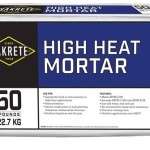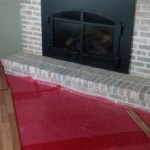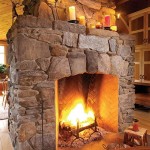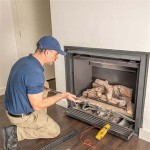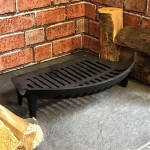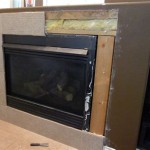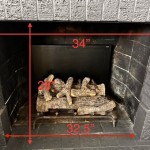Building A Wood Burning Fireplace Insert: A Comprehensive Guide
Installing a wood-burning fireplace insert into an existing masonry fireplace can significantly improve heating efficiency and enhance the aesthetic appeal of a home. A fireplace insert is essentially a sealed firebox that fits inside an existing fireplace, utilizing a dedicated chimney liner to vent exhaust gases. While professional installation is often recommended, understanding the process of building and installing a wood-burning fireplace insert can empower homeowners to make informed decisions and potentially undertake some aspects of the project themselves, provided they possess the necessary skills and knowledge.
This article provides a comprehensive overview of the steps involved in building a wood-burning fireplace insert. It is crucial to consult local building codes and regulations before starting any construction project, and to prioritize safety throughout the entire process. Building and installing a fireplace insert involves working with high temperatures and combustible materials, thus requiring meticulous attention to detail and adherence to safety guidelines.
Key Point 1: Planning and Design Considerations
The initial phase of building a wood-burning fireplace insert involves meticulous planning and design. Several factors must be considered to ensure the insert functions safely and efficiently. These factors include the dimensions of the existing fireplace, the desired heating output, and the type of wood to be burned. A thorough understanding of these elements is crucial for selecting the appropriate materials and designing a suitable insert.
Measuring the Existing Fireplace: The first step is to accurately measure the firebox opening, depth, and height of the existing fireplace. These dimensions will determine the maximum size of the fireplace insert that can be accommodated. It is important to account for any irregularities in the fireplace structure, such as uneven walls or obstructions. Precise measurements are essential for ensuring a proper fit and preventing air leaks.
Calculating Heating Requirements: Determining the required heating output is crucial for selecting the appropriate size and type of wood-burning insert. This calculation depends on the size of the space to be heated, the insulation levels of the house, and the climate. A qualified HVAC professional can provide accurate heating load calculations based on these factors. Selecting an insert with inadequate heating capacity will result in insufficient warmth, while an oversized insert may lead to overheating and inefficient operation.
Selecting Materials: The choice of materials significantly impacts the performance and longevity of the fireplace insert. Steel and cast iron are commonly used for the firebox construction due to their ability to withstand high temperatures and resist corrosion. Refractory materials, such as firebrick or ceramic fiberboard, are used to line the interior of the firebox, protecting the metal from direct flame and increasing heat retention. The exterior casing can be constructed from steel, cast iron, or other non-combustible materials. All materials should be certified for high-temperature applications and meet relevant safety standards.
Designing for Airflow and Combustion: Proper airflow is essential for efficient combustion and clean burning. The design should incorporate a system for primary air intake, which supplies oxygen to the fuel bed. Secondary air intake is also crucial for burning off volatile gases and reducing smoke emissions. The location and size of the air inlets must be carefully calculated to ensure optimal combustion. The design should also include a baffle system to direct exhaust gases through a longer path, increasing heat transfer and reducing creosote buildup in the chimney.
Drafting the Design: After considering these factors, a detailed design should be drafted, including dimensions, material specifications, and assembly instructions. This design will serve as a blueprint for the construction process. It is advisable to consult with a qualified engineer or designer to review the design and ensure its structural integrity and safety.
Key Point 2: Construction of the Fireplace Insert
Building a wood-burning fireplace insert is a complex and demanding task that requires specialized tools and skills. Welding, metal fabrication, and masonry work are often involved. Safety is paramount during the construction process, and appropriate personal protective equipment, such as safety glasses, gloves, and welding helmets, should be worn at all times.
Fabricating the Firebox: The firebox is the core of the fireplace insert and must be constructed with precision and care. Steel plates are typically cut to size and welded together to form the firebox enclosure. The welding process should be performed by a qualified welder to ensure strong, leak-proof seams. The firebox should be designed to accommodate the firebrick or ceramic fiberboard lining. Proper alignment and dimensional accuracy are critical for ensuring a tight seal and preventing air leaks.
Installing the Refractory Lining: The refractory lining protects the firebox from the intense heat of the fire and increases heat retention. Firebrick is typically installed using refractory mortar, ensuring that each brick is properly aligned and bonded to the firebox walls. Ceramic fiberboard can be cut to size and secured with high-temperature adhesive or mechanical fasteners. The refractory lining should cover all interior surfaces of the firebox, including the floor, walls, and ceiling.
Constructing the Air Intake System: The air intake system is responsible for supplying oxygen to the fire for combustion. This system typically consists of air inlets, ducts, and dampers. The air inlets should be designed to draw air from outside the firebox and direct it to the fuel bed and the secondary combustion zone. Dampers allow for controlling the airflow and regulating the burn rate. The air intake system should be designed to prevent air leakage and ensure efficient combustion.
Building the Baffle System: The baffle system is designed to direct exhaust gases through a longer path, increasing heat transfer and reducing creosote buildup. Baffles are typically constructed from steel or cast iron and positioned within the firebox to force the exhaust gases to flow over a larger surface area. The design of the baffle system should optimize heat transfer without restricting airflow. The baffle system should be removable for cleaning and maintenance.
Assembling the Exterior Casing: The exterior casing provides a finished appearance and protects the firebox from damage. Steel, cast iron, or other non-combustible materials can be used for the casing. The casing should be designed to fit snugly around the firebox, allowing for proper ventilation and preventing overheating. The casing should also include access panels for cleaning and maintenance. The exterior casing can be painted or powder-coated to enhance its aesthetic appeal.
Key Point 3: Installation and Chimney Liner
Proper installation and a correctly sized and installed chimney liner are crucial for ensuring the safe and efficient operation of the wood-burning fireplace insert. The chimney liner is a dedicated flue that vents exhaust gases to the outside. Installing a fireplace insert without a properly sized and installed chimney liner can lead to dangerous conditions, such as carbon monoxide poisoning and chimney fires.
Installing the Chimney Liner: A stainless steel chimney liner, typically flexible, is the preferred choice for wood-burning inserts. The liner's diameter is critical and must match the insert's flue outlet size, as specified by the manufacturer. The liner is inserted into the existing chimney, ensuring it reaches the top of the chimney and is properly sealed at both ends. Professional installation is highly recommended to ensure proper sizing, insulation (if necessary), and a secure connection to the insert.
Preparing the Fireplace Opening: The fireplace opening may need to be modified to accommodate the fireplace insert. This may involve removing brick or masonry to create a larger opening or installing a steel frame to provide additional support. The fireplace floor should be level and capable of supporting the weight of the insert. The fireplace opening should be thoroughly cleaned before installing the insert.
Connecting the Insert to the Chimney Liner: The fireplace insert is connected to the chimney liner using a stovepipe adapter. The adapter should be securely fastened to both the insert and the liner, creating an airtight seal. The connection should be inspected for leaks and sealed with high-temperature sealant if necessary. The stovepipe adapter should be made of durable, non-combustible material.
Installing the Block-Off Plate: A block-off plate seals the area between the insert and the fireplace opening, preventing air from escaping up the chimney and improving heating efficiency. The block-off plate is typically made of steel or aluminum and is custom-fitted to the fireplace opening. The block-off plate should be insulated to prevent heat loss. It's important to leave a small gap for ventilation to prevent moisture buildup.
Testing and Inspection: After installation, the fireplace insert should be thoroughly tested to ensure it is functioning properly. This includes checking for proper airflow, draft, and combustion. A professional inspection by a qualified chimney sweep or certified installer is highly recommended to ensure that the installation meets all safety standards and local building codes. Carbon monoxide detectors should be installed in the vicinity of the fireplace to provide an early warning in case of a malfunction.
Building a wood-burning fireplace insert is a significant undertaking that requires careful planning, meticulous construction, and proper installation. While this article provides a comprehensive overview of the process, it is essential to consult with qualified professionals and adhere to all safety regulations to ensure a safe and efficient heating solution.

Fireplace Inserts Everything You Need To Know Full Service Chimney

Fireplace Inserts Everything You Need To Know Full Service Chimney

Fireplace Insert Installation Wood Burning Inserts

How Fireplace Inserts Work We Love Fire

How Fireplace Inserts Work We Love Fire

Build Or Remodel Your Own House Fireplace Problems Prefab Inserts Parts

Get To Know Wood Heaters And Burning Fireplace Inserts Tips

Ventis Hei240 Wood Fireplace Insert Mace Energy Supply

What S Best A Fireplace Stove Or Insert We Love Fire

The Best Wood Burning Fireplace Inserts Or Stoves Ecohome

